Ladies Needle Album
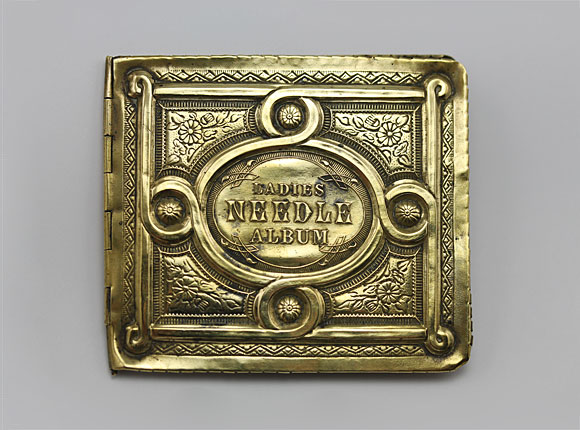
Needle Case (photographs courtesy of Lynda Herrod)

Patent (Fig. 1, 2 and 3)
Design Details
Needle Case Type: |
Flat-Names |
Patent/Registered to: |
Joseph Welch & Charles Laight - Redditch |
Patent/Design Representation #: |
Mechanical Patent: #1287 (Figures 1, 2 and 3) |
Patent/Design Registration Date: |
May 12, 1871 |
Location of Patent/Design Registration: |
British Library - Business and Intellectual Property Centre – London |
Reference #: |
1871-1287 |
Dimensions: |
6.0 x 5.6 |
Material: |
Brass |
Name Variations: |
Unmarked |
Other Variations: |
None |
Additional Photographs
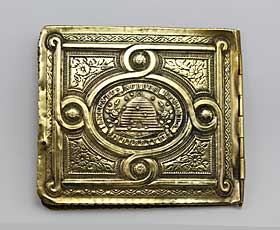
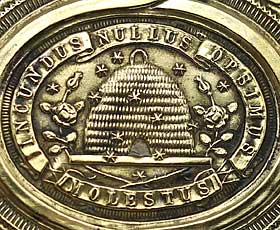
Back and back detail
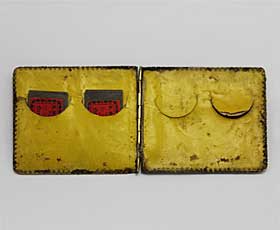
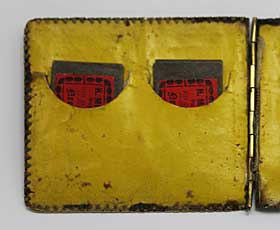
Interior and interior detail
Facts
An album is a book with blank pages used to house a collection common examples being stamps, photographs or autographs. The name derives
from the Latin albus meaning white with the noun album meaning blank tablet. They are known to date back as far as the 16th century when they
were used to gather the names of fellow graduates as a record of college friends, a precursor of the autograph book. As time passed and
fashions and technology changed, so too did the contents of albums. A variety of blank paged books were available for men and women to create
albums in Victorian times.

History
The German friendship books which appeared in the 1500s were possibly seen as a way of maintaining contact with peers initially but with time
the autographs became more elaborate and mementos might include verses of poetry, sketches or other artwork, pressed flowers, silhouettes and pieces
of embroidery. Books with similar items became very popular with young Victorian ladies. Their albums were prized possessions in which
they expressed their interests in prose and poetry, drawings and the natural world. As printed material became more common, significant items
were added along with collected wise sayings. With the event of chromolithography, scraps became immensely popular, as did greeting cards and
similarly photographs as they became available. As the albums contents became more elaborate so too did the covers and bindings. A
variety of albums were commercially available including covers that were leather bound and tooled or velvet some with metal clasps and locks.
The ornate nature was in keeping with the pride of place these books held on the Victorian parlour table where they would be displayed and used to
entertain family and friends. Click on the picture below to see a larger version of it.
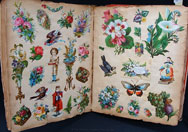
Miscellaneous
The Victorian age is known for a fascination with nature so it is not surprising that pressed flowers were a popular inclusion in well-bred young
ladies’ albums. Less well known is the popularity of dried and arranged seaweed at that time. The collection of seaweed from the shore
was considered a very suitable activity for a young lady and one for which a chaperone was not required. Queen Victoria was known to have made a
seaweed album as a girl. Advice on the correct dress for this pastime was set out and the materials to assist in collection and preparation of
specimens were available in the popular seaside towns. Once collected, specimens were cleaned and arranged artistically on the mounting paper
before being pressed between sheets of blotting paper and left to dry. The specimen would stick to the paper without the need for glue through
substances exuded in the pressing process. Men were involved in this activity as well but they were afforded credit for a scientific interest
whereas for women it was a seen merely as a hobby. Click on the picture below to see a larger version of it.
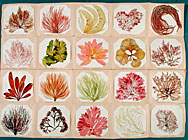
Note: Right side panel text and photos provided by Lynda Herrod.













